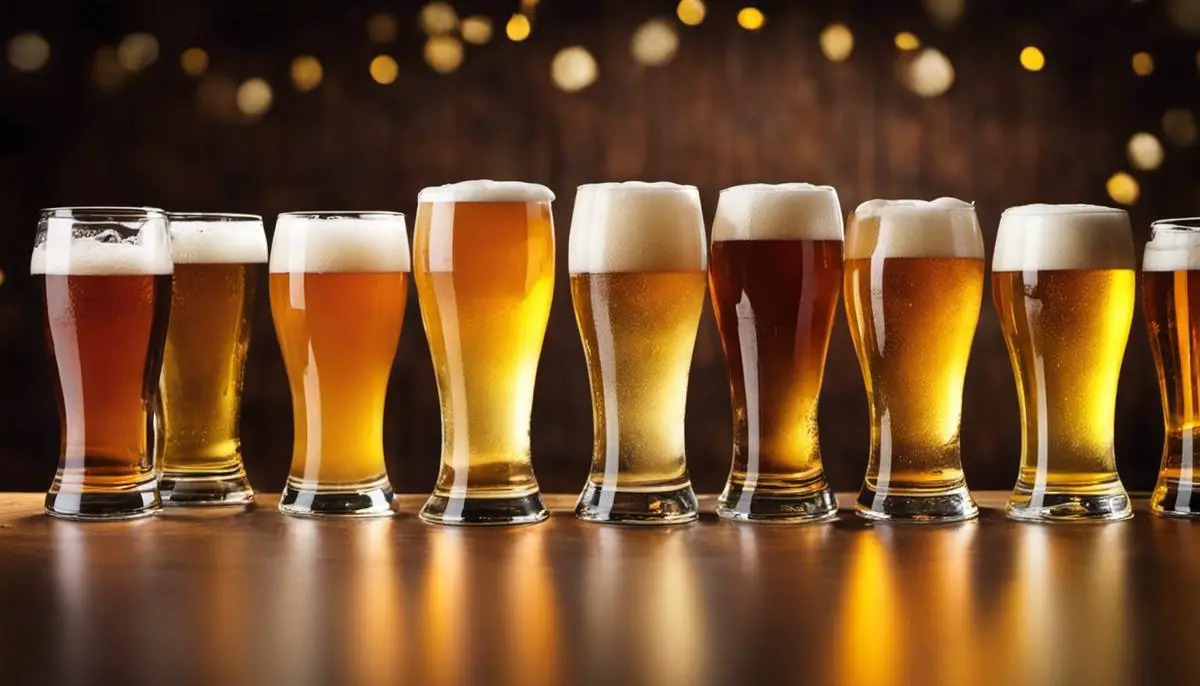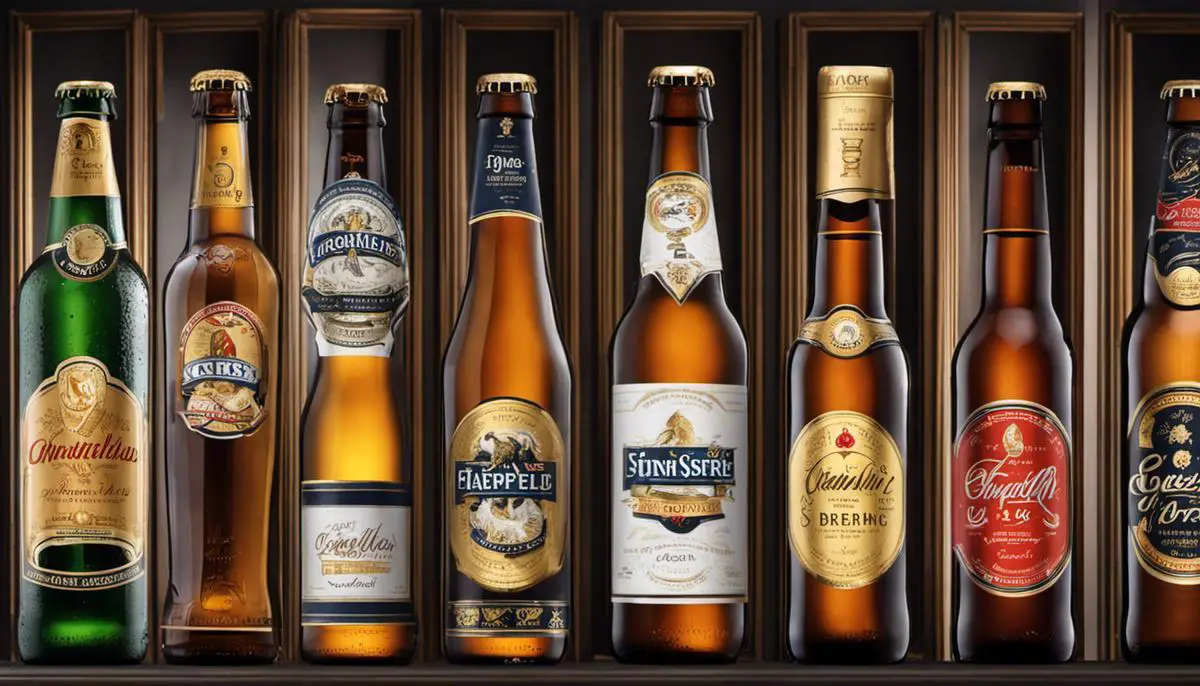In an evolving beer market that seamlessly merges tradition and innovation, the humble ‘light beer’ has found a formidable position and a dedicated fanbase among discerning consumers worldwide. This is not only due to its calorie count and casual drinking appeal but also because of its distinct characteristics and intriguing brewing process.
Whether you’re a beer enthusiast looking to expand your horizons or a novice who wants a fundamental understanding of light beers, this comprehensive dive into the world of light beers will help illuminate your way.
Understanding Light Beers

Understanding Light Beers: Defining the Brew
Light beers, often synonymous with a lower calorie count and alcohol content, have become a popular choice for those seeking a guilt-free, refreshing brew. It’s important to understand that the term ‘light’ doesn’t necessarily mean ‘low in alcohol,’ but instead generally refers to the beer’s color, caloric content, and sometimes, its taste profile.
Brewing Process of Light Beers
Light beers are brewed very similarly to their ‘regular’ or non-light counterparts. They originate from the same components: water, grains (usually barley and wheat), hops, and yeast. The distinction resides in the brewer’s manipulation of these ingredients and their fermentation process. Often, brewers will reduce the amount of malt used or shorten the fermentation period, leading to less sugar content converting into alcohol, thus creating a beer with less alcohol and fewer calories.
Characteristics of Light Beers
Light beers typically possess a light golden color and a thin, crisp taste. Because they contain fewer malts, they tend to lack the heavy, robust flavors found in non-light beers. Their hop character might also be less prominent as a lower amount of hops are used, leading to less bitterness. Furthermore, light beers are typically high in carbonation, resulting in a crisp, clean finish.
In terms of calorie content, light beers usually hover around 100-120 calories per 12-ounce serving, but this can significantly vary among brands. They also generally contain less alcohol, often between 3.2% and 4.2% alcohol by volume (ABV), although this can also range based on the specific style and brand.
Reasons for the ‘Light’ Term
A considerable factor in naming beers ‘light’ lies in marketing drives and consumer demands. For beer drinkers who want to manage their caloric and alcohol consumption, these beers offer an appealing choice. The light beer trend began in earnest in the 1970s, a response to a growing fitness awareness where the demand was for products lower in calories.
Comparing Light Beers with Non-light Beers
Non-light beers (muscular stouts, potent IPAs, heady porters) are richer in flavor and higher in alcohol content due to the increased use of malt, longer fermentation times, and the addition of more and different types of hops.
The main difference hence lie in the beer’s flavor profile, calorie content, and alcohol level. Non-light beers have a fuller, deeper flavor due to the higher malt content and different fermentation process. They also typically contain more calories and a higher ABV, given their more complex brewing process and ingredient composition.
Conclusion
To sum it up, light beers provide an alternative to traditional beers with fewer calories and less alcohol, though they often differ in flavor and tend to be lighter in color. The rise of light beers illustrates how established products like beer can evolve in response to changing consumer preferences and the growing emphasis on healthier lifestyles.
Popularity and Perception of Light Beers

The Surge of Light Beers
The demand for light beers has been consistently rising over the recent years in the US, carving a significant niche for itself in the beer industry. Heavyweights in the light beer category, such as Bud Light, Coors Light, and Miller Lite, command a substantial share of the beer market. Despite the thriving craft beer scene, light beers have managed to maintain a solid standing.
The relatively lower calorie content in light beers as compared to other beers has largely contributed to their success. As more people become conscious of their health, light beers have emerged as a supposed healthier substitute to regular and craft beers. They’re also less filling, making them the preferred choice in environments where they’re consumed in larger quantities, such as during sporting events.
Consumer Preferences
Consumer preferences for light beers vary greatly, but a common thread is a desire for lighter, less robust flavors. Some consumers prefer light beers due to their refreshingly crisp taste, while others appreciate the mild flavor because it allows for easy and continuous consumption. Light beers also tend to be favored in warmer weather due to their refreshing nature.
Understanding the Popularity of Light Beers
The popularity of light beers cannot be overstated. They were born out of the need for a low-calorie alcoholic beverage that wouldn’t weigh down the consumer. The rise in health and fitness consciousness among consumers has undoubtedly played a significant role in the sustained popularity of light beers. American consumers, in particular, have shown a greater inclination towards low-calorie, low-carb beers.
But it’s not just health consciousness propelling the popularity of light beers. Their neutral flavor profile also makes them incredibly versatile as social drinks, able to complement a wide variety of foods without overpowering them. This is a key selling point for many consumers, particularly for those who appreciate beer as a part of a meal rather than the main event.
Light Beers in the Consumer Market
Light beers have grown in popularity across various age groups, ranging from college students to older adults. They’re especially favored in social settings where drinking extends for a longer duration. Light beers have carved out their own space in the beer market with their appealing attributes of being ‘refreshing,’ ‘drinkable,’ and ‘light’, according to various consumer surveys and interviews.
While some beer lovers argue that light beers may lack a certain depth in flavor, this perspective doesn’t seem to significantly deter the widespread preference for these beers in the market.
Review and Comparison of Top Light Beers

Bud Light’s Dominance in the Light Beer Market
At the forefront of light beers is Bud Light, a brand recognized for its consistent quality and broad consumer appeal. Brewed from a curated selection of premium aromatic hops and blended with a variety of malts and cereals, Bud Light delivers a distinctive, refreshing taste. With an alcohol content of 4.2% and only 110 calories, Bud Light maintains a perfect balance for those who love beer but are also mindful of their health.
Coors Light: The Silver Bullet
Another leading brand in the market is Coors Light. Known as the ‘Silver Bullet,’ this cold lager piques people’s interest with its smooth and crisp taste. With a slightly lesser alcohol content – at 4.2%, Coors Light boasts a slightly lesser calorie count than Bud Light – measuring in at 102. Brewing with lager yeast and grains including maize and barley sets this beer apart.
The Ultra Light Michelob Ultra
For those extremely conscious about their health but who still enjoy a good beer, Michelob Ultra takes the cake. Holding a low post at 95 calories but offering a 4.2% alcohol volume, Michelob Ultra surpasses competitor brands in terms of its healthiness. This beer is brewed using gentle malts and selected grains and is considered perfect for an active, balanced lifestyle.
Amstel Light: Netherlands Charm
Amstel Light Beer is a lager beer with less bitterness, delivering a unique honey finish. Imported from the Netherlands, it is composed of selected hops and unique yeast, providing a delicious rich taste. With a slightly higher alcohol volume of 4.5% and 95 calories per bottle, Amstel Light gives a tight competition to Michelob ultra even with a remarkably smooth taste.
Rank by Taste
When ranking simply by taste, Bud light takes the lead, followed by Coors Light, Amstel Light, and Michelob ultra. The crispness and refreshing attribute of Bud light sets it apart, while the other beers offer a blend of unique flavors that will satisfy different palates.
Rank by Calories & Healthiness
In terms of healthiness and lesser calorie content, Michelob Ultra and Amstel Light are clear winners. These beers are designed keeping health-conscious consumers in mind and thus have less alcohol and calories per bottle.
Rank by Popularity
Bud Light takes the crown in popularity, followed by Coors Light, Michelob Ultra, and Amstel light. Bud Light’s extensive marketing and solid reputation have garnered it a significant customer base.
In your pursuit to know more about these light beers, always remember to drink responsibly. The essence of enjoying these beers lies not only in their unique characteristics but also in moderate, balanced consumption.

As we delve into the intricate characteristics, consumer perceptions, and top brands of light beers, we uncover a fascinating world that stretches beyond a simple brew. Market trends, customer preferences, and in-depth reviews reveal that light beer isn’t just a lower-calorie alternative—it’s a testament to the evolution and diversity of beer itself. So, get ready to welcome light beers into your palate’s repertoire and appreciate the mastery it takes to create these refreshing brews.

